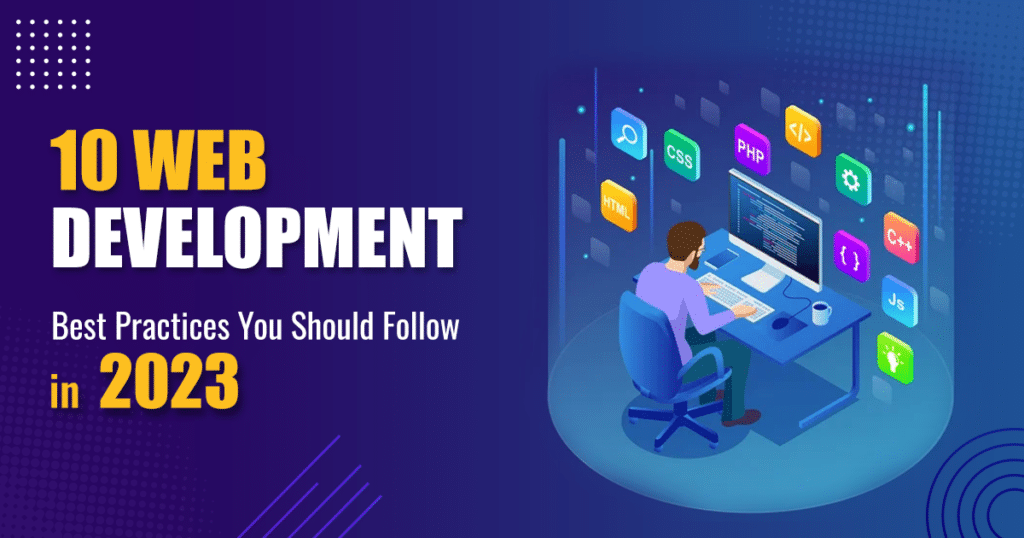Web development is a dynamic and ever-changing field that requires constant adaptation and innovation. As a web developer, you need to keep up with the latest trends and technologies that shape the web industry and user expectations. In this article, we will share 10 web development best practices that you should follow in 2023 to create fast, responsive, and user-friendly websites and web apps.
1. Use Progressive Web Apps (PWAs)
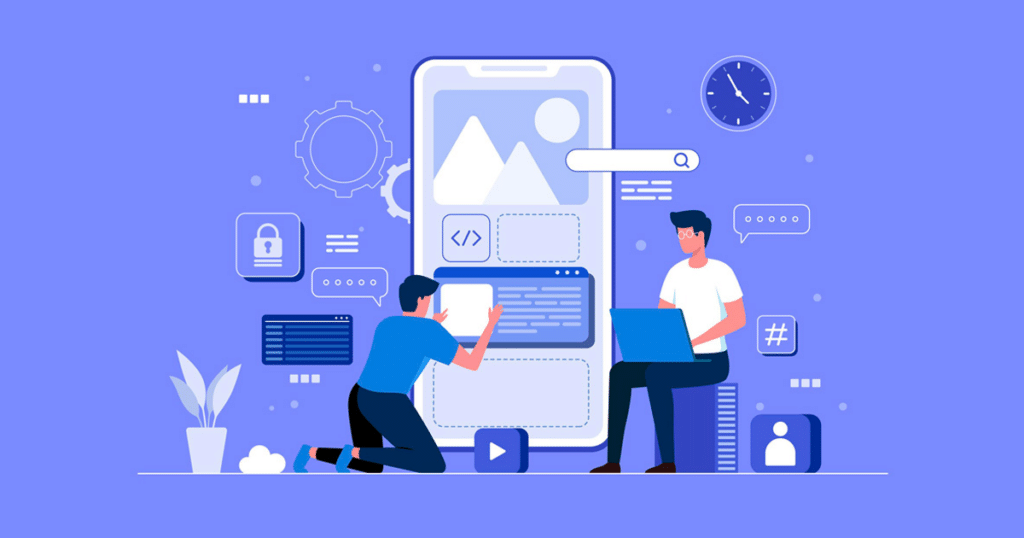
Progressive web apps (PWAs) are web applications that combine the best features of native apps and websites. They are fast, reliable, and engaging, and they can work offline, send push notifications, and access device features. PWAs can also be installed on the home screen of mobile devices, providing a seamless app-like experience.
According to Google, PWAs can increase conversions, engagement, and retention rates for businesses across various industries. For example, Pinterest increased its core engagement by 60% and ad revenue by 44% after launching its PWA. Uber reduced its page load time to 2 seconds on 2G networks with its PWA. Twitter increased its daily active users by 65% with its PWA.
To create a PWA, you need to use web technologies such as HTML, CSS, JavaScript, React, WebAssembly, or Angular. You also need to implement a service worker, which is a script that runs in the background and handles caching, offline functionality, and push notifications. Additionally, you need to provide a web app manifest, which is a JSON file that contains metadata about your app, such as name, icon, theme color, and orientation.
2. Implement AI Chatbots
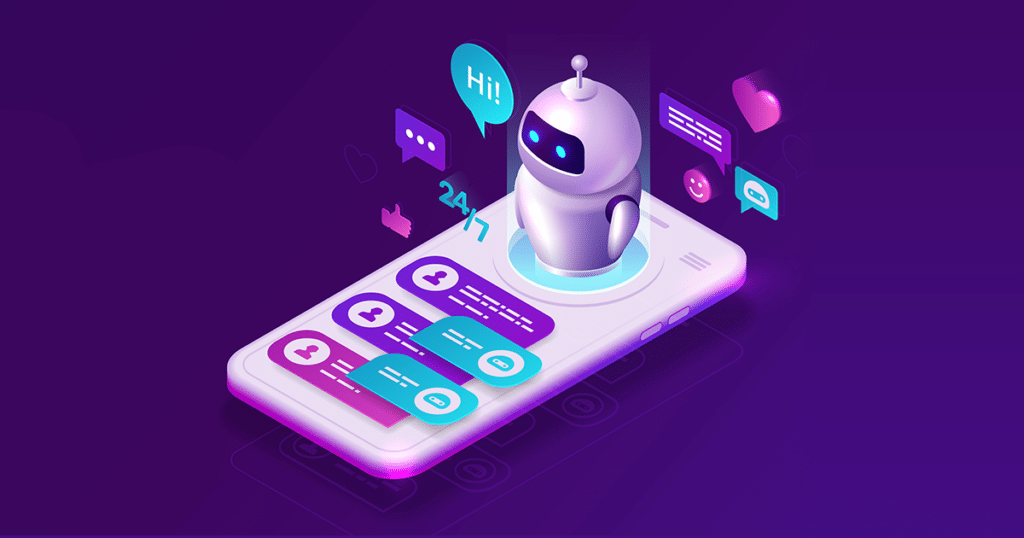
AI chatbots are software applications that use artificial intelligence (AI), natural language processing (NLP), and information retrieval (IR) techniques to simulate human conversations and provide assistance to users via voice or text chats. AI chatbots can help businesses improve customer service, increase sales, reduce costs, and enhance user experience.
According to Gartner, by 2023, 25% of customer service operations will use virtual customer assistants (VCAs) or chatbot technology across engagement channels. Moreover, according to Business Insider, the global chatbot market is expected to reach $9.4 billion by 2024, growing at a compound annual growth rate (CAGR) of 29.7%.
To implement an AI chatbot, you need to use a chatbot platform or framework that provides the tools and resources to build, train, test, and deploy your chatbot. Some of the popular chatbot platforms and frameworks are Dialogflow, IBM Watson Assistant, Microsoft Bot Framework, Rasa, and Wit.ai.
3. Optimize Page Speed
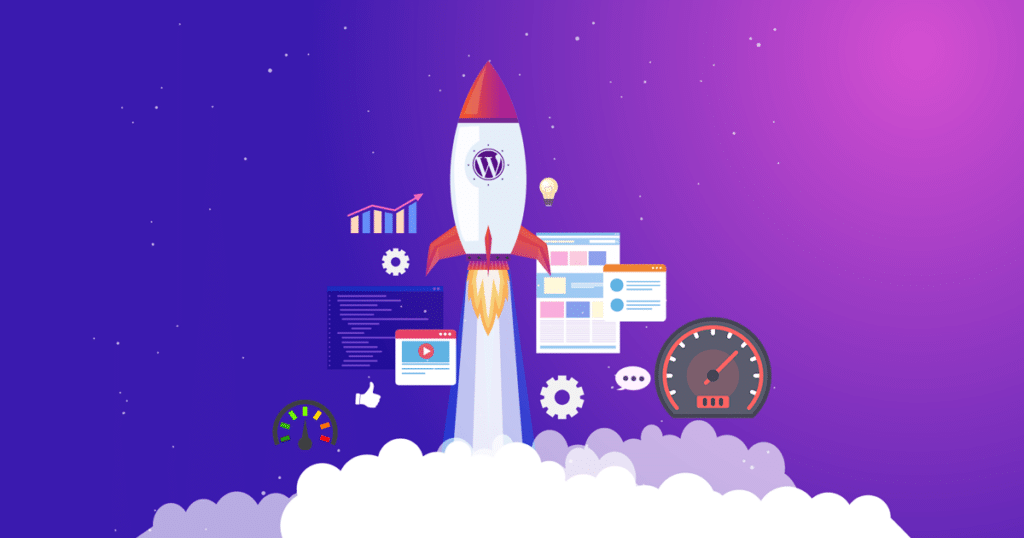
Page speed is the time it takes for a web page to load and display its content. Page speed is crucial for web development because it affects user experience, SEO rankings, conversion rates, bounce rates, and revenue. According to Google, 53% of mobile users abandon a site that takes longer than 3 seconds to load. Moreover, according to Unbounce, a one-second delay in page load time can reduce conversions by 7%.
To optimize page speed, you need to use various web development practices such as:
- Compressing images and videos to reduce their size
- Minifying code, scripts, and style sheets to make them as small as possible
- Enabling caching so that resources are not requested multiple times during a single page load
- Using a content delivery network (CDN) to distribute your content across multiple servers around the world
- Implementing lazy loading to defer loading of non-critical elements until they are needed
- Using responsive design to adapt your layout and content to different screen sizes and devices
You can use tools such as Google PageSpeed Insights, GTmetrix, or Pingdom to measure your page speed and get suggestions for improvement.
4. Adopt Responsive Design
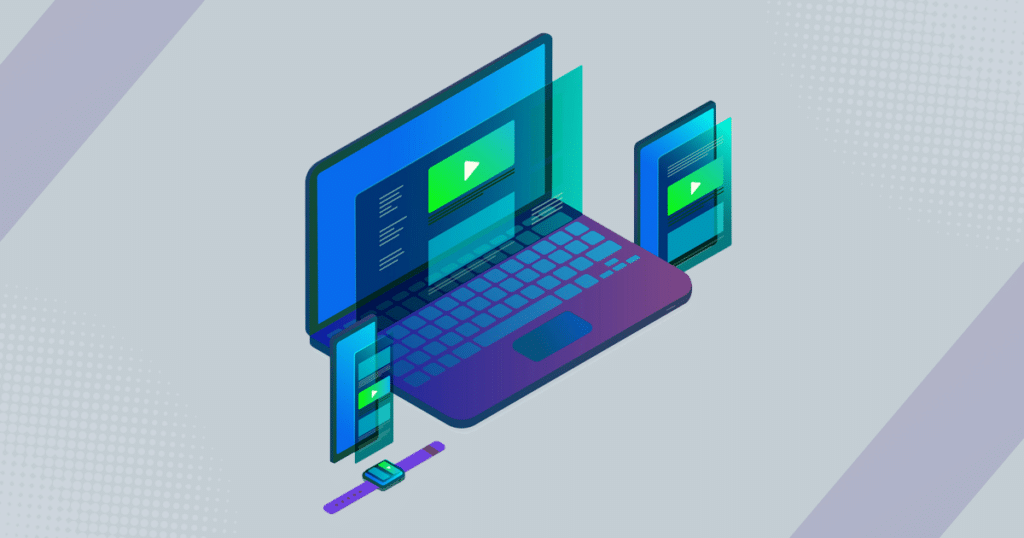
Responsive design is a web development approach that aims to create websites and web apps that can adapt their layout and content to different screen sizes and devices. Responsive design ensures that your website or web app looks good and works well on desktops, laptops, tablets, smartphones, smart TVs, smart watches, and other devices.
According to Statista, mobile devices accounted for 58% of global website traffic in the second quarter of 2022. Moreover, according to Google, 61% of users are unlikely to return to a mobile site they had trouble accessing, and 40% visit a competitor’s site instead. Therefore, responsive design is essential for web development in 2023 and beyond.
To adopt responsive design, you need to use web technologies such as HTML, CSS, and JavaScript to create flexible grids, images, and media queries that can adjust to different viewport sizes and orientations. You can also use frameworks such as Bootstrap, Foundation, or Materialize to simplify the process of creating responsive websites and web apps.
5. Leverage Serverless Architecture

Serverless architecture is a web development paradigm that allows you to run your code and applications without managing or provisioning servers. Serverless architecture abstracts away the complexity of server management and lets you focus on your business logic and functionality. Serverless architecture also offers benefits such as scalability, performance, reliability, security, and cost-efficiency.
According to MarketsandMarkets, the global serverless architecture market size is expected to grow from $7.6 billion in 2020 to $21.1 billion by 2025, at a CAGR of 22.7%. Moreover, according to Cloudflare, serverless is the most significant change in cloud computing since the cloud itself.
To leverage serverless architecture, you need to use a serverless platform or service that provides the infrastructure, runtime environment, and tools to run your code and applications. Some of the popular serverless platforms and services are AWS Lambda, Google Cloud Functions, Microsoft Azure Functions, IBM Cloud Functions, and Cloudflare Workers.
6. Integrate Voice Search Optimization

Voice search optimization is the process of optimizing your website and web app for voice-based queries. Voice search optimization helps you improve your SEO rankings, traffic, conversions, and user experience for users who prefer to use voice assistants such as Google Assistant, Siri, Alexa, or Cortana to search for information or perform tasks online.
According to Juniper Research, voice-based ad revenue could reach $19 billion by 2022. Moreover, according to Adobe, 48% of consumers use voice for general web searches. Therefore, voice search optimization is a web development trend that you should not ignore in 2023.
To integrate voice search optimization, you need to use various web development practices such as:
- Using natural language and conversational tone in your content
- Providing clear and concise answers to common questions
- Using schema markup and structured data to provide context and meaning to your content
- Optimizing your site for mobile devices and local searches
- Implementing HTTPS and SSL certificates to ensure security and trust
You can use tools such as Google Search Console, Google Analytics, or SEMrush to analyze your voice search performance and get insights for improvement.
7. Embrace Dark Mode
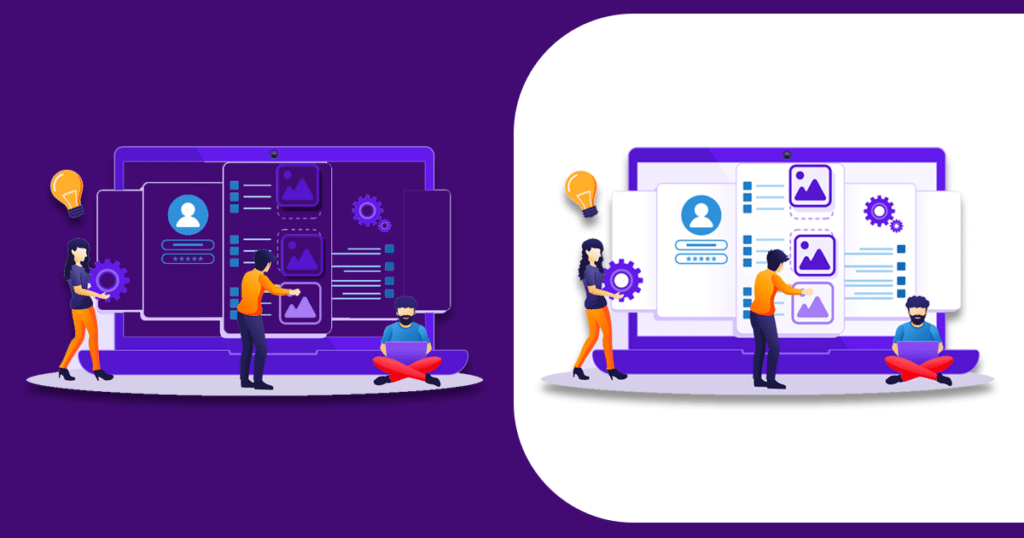
Dark mode is a web design feature that allows users to switch between light and dark themes on your website or web app. Dark mode offers benefits such as reducing eye strain, saving battery life, enhancing aesthetics, and improving accessibility for users with visual impairments or low-light environments.
According to Webdesigner Depot, dark mode is one of the hottest web design trends in 2023. Major websites and web apps such as YouTube, Twitter, Reddit, Facebook Messenger, WhatsApp, and Instagram have already integrated dark mode into their user interfaces. Moreover, according to Android Authority, 81% of smartphone users prefer dark mode over light mode.
To embrace dark mode, you need to use web technologies such as HTML, CSS, JavaScript, React, WebAssembly, or Angular to create a dark theme for your website or web app. You also need to provide a button or toggle that allows users to switch between light and dark modes. Additionally, you need to use media queries and prefers-color-scheme property to apply the appropriate theme depending on the user’s preference or device settings.
8. Utilize Motion UI
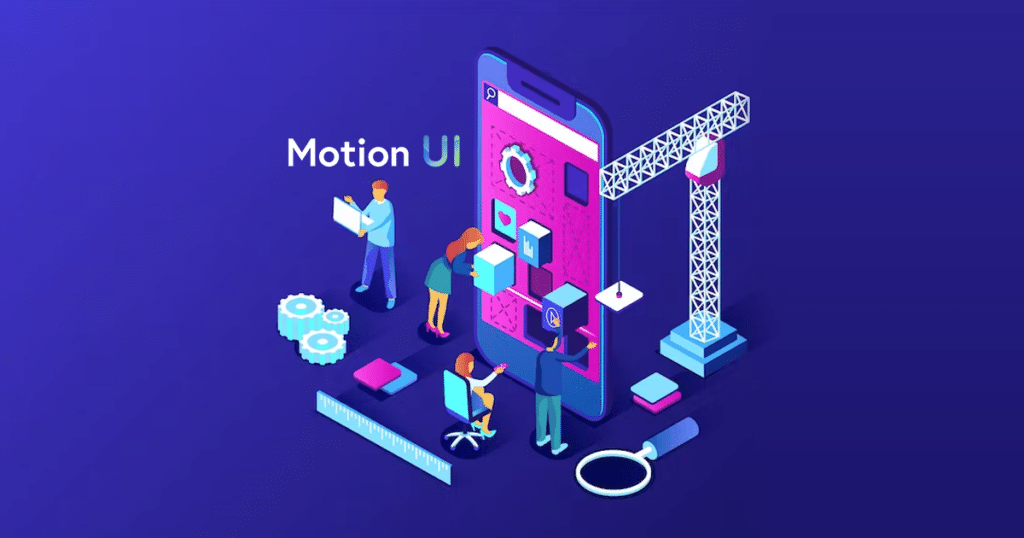
Motion UI is a web design technique that uses animations, transitions, and effects to create dynamic and interactive user interfaces. Motion UI can help you attract attention, convey information, provide feedback, enhance usability, and improve user engagement on your website or web app.
According to Webflow, motion UI is one of the top web design trends for 2023. Motion UI can be used for various purposes such as:
- Loading animations that indicate progress and reduce perceived waiting time
- Hover effects that highlight links, buttons, or images when the cursor moves over them
- Parallax scrolling that creates a sense of depth and movement by moving different elements at different speeds
- Background animations that add visual interest and personality to your site
- Micro-interactions that provide subtle feedback or guidance for user actions
To utilize motion UI, you need to use web technologies such as HTML, CSS, JavaScript, React, WebAssembly, or Angular to create animations, transitions, and effects for your user interface elements. You can also use libraries such as GSAP, Anime.js, or ScrollMagic to simplify the process of creating motion UI.
9. Incorporate Web Accessibility

Web accessibility is the practice of ensuring that your website or web app can be accessed and used by everyone, regardless of their abilities, disabilities, or devices. Web accessibility helps you improve user experience, SEO rankings, legal compliance, and social responsibility.
According to the World Health Organization, more than 1 billion people worldwide have some form of disability. Moreover, according to WebAIM, 97.8% of the top 1 million home pages have detectable WCAG 2 failures. Therefore, web accessibility is a web development trend that you should follow in 2023 and beyond.
To incorporate web accessibility, you need to use various web development practices such as:
- Using semantic HTML elements and attributes to provide structure and meaning to your content
- Using alt text, captions, transcripts, and audio descriptions to provide alternative ways to access your media content
- Using contrast, color, font size, and spacing to ensure readability and visibility of your text content
- Using keyboard navigation, focus indicators, skip links, and tab order to ensure operability and usability of your interactive elements
- Using ARIA roles, states, and properties to provide additional information and context for screen readers and assistive technologies
- Testing your website or web app with various tools such as WAVE, axe, or Lighthouse to identify and fix accessibility issues
10. Experiment with 3D Graphics

3D graphics are a web design technique that uses three-dimensional models, images, animations, and effects to create realistic and immersive user interfaces. 3D graphics can help you showcase your products, services, or features in a more engaging and interactive way.
According to Awwwards, 3D graphics are one of the most innovative web design trends for 2023. 3D graphics can be used for various purposes such as:
- Product visualization that allows users to view, rotate, zoom, or customize your products in 3D
- Virtual reality (VR) or augmented reality (AR) that allows users to experience your products or services in a simulated or enhanced environment
- Gamification that allows users to play games or complete challenges on your website or web app
- Storytelling that allows users to follow a narrative or explore a scenario on your website or web app
To experiment with 3D graphics, you need to use web technologies such as HTML, CSS, JavaScript, React, WebAssembly, or Angular to create 3D models, images, animations, and effects for your user interface elements. You can also use libraries such as Three.js, Babylon.js, or A-Frame to simplify the process of creating 3D graphics.
Conclusion
Web development is a fast-paced and exciting field that offers endless opportunities for creativity and innovation. By following these 10 web development best practices in 2023, you can create websites and web apps that are fast, responsive, user-friendly, and future-proof. If you need help with your web development project, contact us today and let our experts handle it for you.
